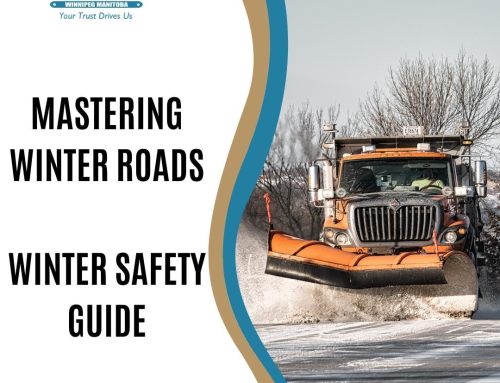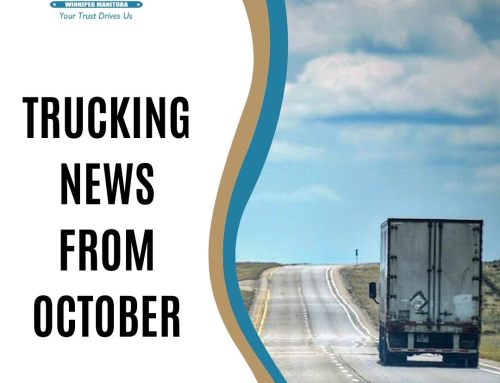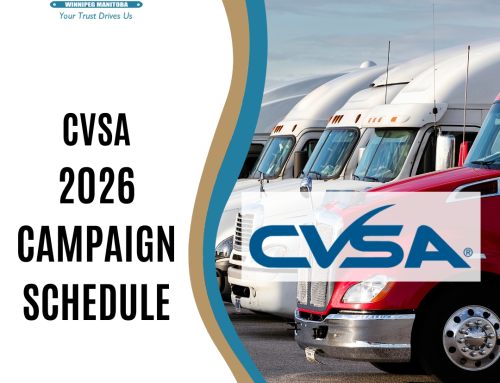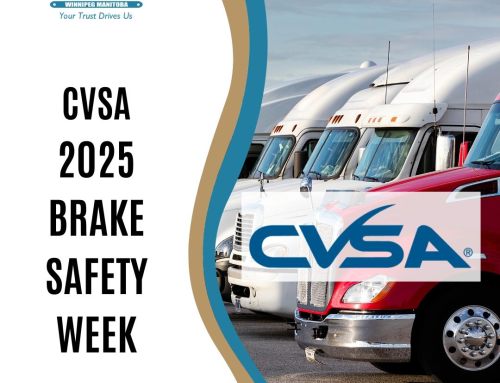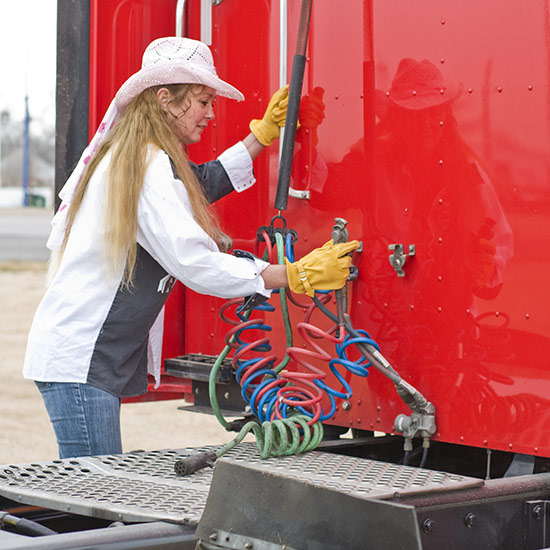 Safety When Dropping Your Trailer
Safety When Dropping Your Trailer
Hooking up to, or unhooking from, your trailer seems like a simple procedure. It is simple and routine. Simple everyday tasks can be dangerous when we get complacent and fail to follow proper procedures. Improperly uncoupling or coupling a loaded trailer can cause injury or cost a lot of money if we get sloppy.
Coupling or Hooking Up to a Trailer
- First, check the frame and suspension of the truck. This should be done during your pre-trip but if you started the day with another trailer and you are connecting to a new one – it’s a good idea to give the parts your truck that was obstructed by your trailer a better inspection now that you have a chance.
- Check your fifth wheel. Ensure that it’s properly greased. Poor lubrication will cause damage and steering problems due to friction. Also, check that your fifth wheel plate is angled down towards the rear. Something could be wrong with your fifth wheel if it is in an unusual position. Make sure the jaws are open. Check for damage to the plate or frame.
- Check your trailer kingpin is not damaged and doesn’t have a king pin lock.
- Check around your trailer for obstructions.
- Line up your tractor straight on in front of the trailer. You don’t want to back in at an angle as you can damage to landing gear legs.
- Roll down your windows. Whenever you are backing your truck you should have the windows rolled down. You want to hear audible warnings in case of emergency and if something goes wrong there will often be an audible sound. You’ll also be able to hear when the kingpin and fifth wheel couple.
- Back SLOWLY under the trailer.
- Watch your mirrors. You can see your fifth wheel as it slides under the trailer. Make sure the bottom trailer edge will make contact with the angled fifth wheel. The fifth wheel should lift the trailer. If the trailer is too low, your tractor frame or edge of your fifth wheel can damage the trailer. If the trailer is too high, your fifth wheel jaws may not lock properly, or your fifth wheel plate will slide under and past the kingpin.
- Adjust trailer height as needed.
- Back in until you hear and feel the kingpin and fifth wheel lock. Choose your low forward gear and tug the tractor forward to ensure the fifth wheel is locked. Get out and physically look and ensure the unlocking handle is in and that you can see the jaws are locked around the kingpin.
- Raise your landing gear.
- Hook up air lines and electrical (ponytail).
- Complete a PROPER pre-trip on your trailer!
Uncoupling Your Trailer
Uncoupling your trailer has more risk. Pay attention to your mirrors and if you think you see something unusual – stop!
- Roll down your windows.
- Look for obstructions and hazards before you back into your spot.
- Make sure the ground will support a loaded trailer. The trailer legs can sink in gravel lots, particularly when they are wet in the spring, and asphalt can be damaged in the hot summer afternoons by the landing gear legs. If you see a pile of wood square boards or other trailers with wood supports under the landing gear legs, it’s a good indicator they want you to use them.
- Asphalt lots often have a strip of concrete where you need line up the landing gear when dropping your trailer. You can back in and line up the landing gear as best you can, then get out and lower the legs close to the ground, then reposition as needed so the landing gear legs are fully on the concrete strip.
- Dolly down your landing gear until the feet are about an inch off the ground. You just want to ensure your truck is still supporting the weight.
- Disconnect the air lines and ponytail.
- Unlock your fifth wheel jaws.
- Dump the manual air ride if the trailer is equipped with a manual dump.
- DOUBLE CHECK THAT YOUR LANDING GEAR IS DOWN, and AIR LINES AND PONYTAIL ARE DISCONNECTED. This is the most common uncoupling accident and they can be dangerous and costly.
- Get into your truck and manually dump the tractor air ride. This lowers the rear suspension and allows the trailer legs to slowly take on the trailer weight.
- Slowly pull forward until the fifth wheel is no longer under the trailer while your tractor frame is still under the trailer and stop. Get out and check that the trailer legs are supporting the weight and haven’t buckled and that the ground is supporting the weight and your trailer is not sinking.
- Once your satisfied that the trailer is okay, pull forward completely from under the trailer.
The key is to pay attention. It’s easy when your tired or in a hurry to miss a step. Remember, most truck accidents happen while backing and in close quarters. Always take your time and do the job correctly. Minor incidents can add up to big dollars. Plus, you’ll feel really silly if you tear an airline off your truck because you forgot to disconnect it.

